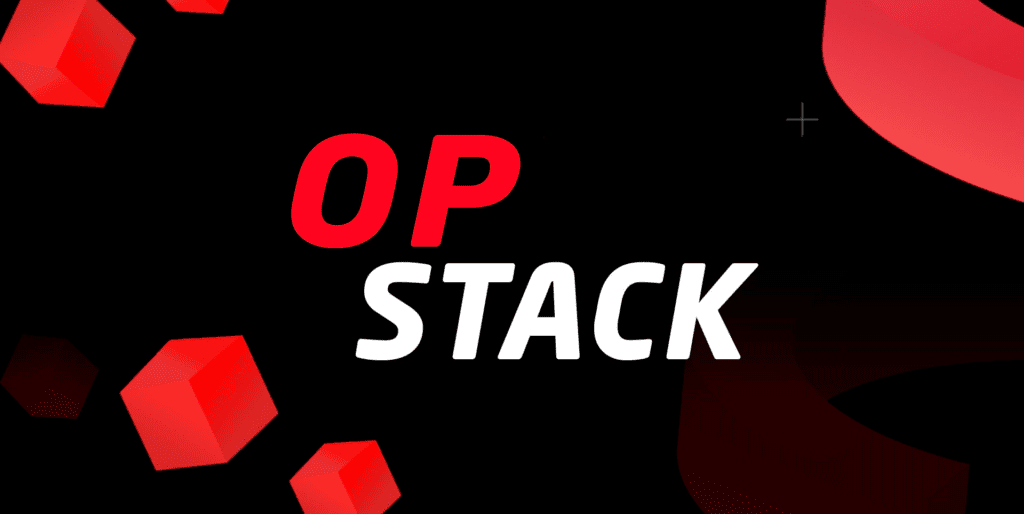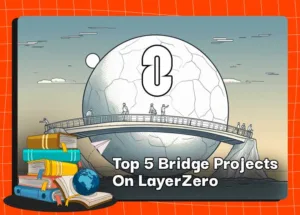Key Points:
- OP Stack and ZK Stack are leading contenders in the race to address Ethereum’s scalability challenges through Layer 2 solutions.
- OP Stack focuses on creating a high-quality open-source platform for launching optimistic rollup networks, aiming to achieve a unified Superchain in the future.
- ZK Stack, based on zkSync Era code, empowers developers with unparalleled sovereignty and seamless connectivity to build custom ZK-driven Layer 2 and Layer 3 chains, known as Hyperchains, offering hyperscalability and a trustless liquidity network.
In the dynamic world of blockchain technology, the race to scale Layer-2 solutions is heating up, and two prominent contenders, OP Stack and ZK Stack, are leading the charge in addressing Ethereum’s scalability challenges.

OP Stack and ZK Stack are both innovative products that aim to enhance Layer-2 scaling on the Ethereum network. While their ultimate goal is the same, they employ distinct approaches to achieve this feat, making the competition between the two projects particularly intriguing.
The competition between OP Stack and ZK Stack is fierce, with both projects attracting attention from developers and the blockchain community. The winner of this race will have a profound impact on Ethereum’s future scalability, enabling faster and more cost-effective transactions on the network. Let’s Coincu compare the difference between these 2 structures.
OP Stack
Developed and maintained by the dedicated Optimism Collective, OP Stack (Over Powered Stack) stack is designed with key principles in mind: utility, simplicity, and extensibility, enabling a shared, open-source system for deploying new rollup networks.
The primary focus of the OP Stack is to create a high-quality, fully open-source platform for launching optimistic rollup networks. This becomes increasingly vital as the concept of the Superchain gains traction, necessitating the secure establishment of new networks that can seamlessly interoperate within the proposed Superchain ecosystem. By adhering to shared standards, the Optimism Collective aims to foster collaboration and avoid redundancy in software development, thus streamlining the deployment of layer 2 blockchains.
Presently in its Bedrock iteration, the OP Stack provides developers with the necessary tools to launch optimistic rollup networks. It has been meticulously designed to support the Optimism Superchain, which is a network of interconnected layer 2 solutions sharing security, communication layers, and the common development stack – the OP Stack itself. Bedrock empowers developers to rapidly create and deploy custom rollup networks that are fully compatible with the Superchain ecosystem. However, it’s important to note that the current Bedrock release lacks the flexibility for easy modifications, which is essential for accommodating future iterations of the OP Stack.
One of the most notable aspects of the OP Stack is the groundbreaking concept it introduced – the “Open Garden.” This concept allows OP chains to achieve atomic cross-chain combinations, provided they voluntarily choose to enter the same shared sequencer set. In essence, it enables seamless collaboration among different chains within the ecosystem. For those OP chains that prefer not to operate their own sequencer, they have the option to utilize the Optimism shared sequencer for a certain fee, presenting a profit model for Optimism.
Looking ahead, the vision for the OP Stack revolves around the concept of a unified Superchain, where all OP chains are fully interoperable within the Optimism platform. Thanks to the sharing of modules within the OP Stack, developers can recycle and reuse code, making the entire system more robust and resistant to vulnerabilities and bugs.

Shortly after its launch, the OP Stack received overwhelming support from prominent players in the Web3 space. Coinbase, a leading cryptocurrency exchange, announced its collaboration with the OP Stack to create a multi-chain Layer 2 (L2) platform. The partnership aims to upgrade the Optimism mainnet, Base, and other L2s to establish an initial superchain structure, enabling seamless bridging and sorting of transactions. As part of this collaboration, Base, built on the OP Stack, provides enhanced security and scalability to support decentralized applications, while offering full compatibility with the Ethereum Virtual Machine (EVM) at minimal cost, thereby boosting developer platform growth.
At the core of the OP Stack, Ethereum serves as the dedicated Data Availability (DA) layer, responsible for storing and securing data. Ethereum’s Proof of Stake (PoS) consensus mechanism ensures the integrity and security of the data on which the OP Stack relies.
The OP Stack’s layered architecture includes the execution layer, which leverages the Ethereum Virtual Machine (EVM) to process transactions and execute state changes. The derivation layer is responsible for deriving data inputs from the DA layer for state writes, ensuring smooth operations and interoperability.
As the ecosystem expands, the OP Stack is committed to continuous improvement. The team plans to introduce a modular sequencer set to prepare for multiple rollup networks to be built using the OP Stack, enhancing interoperability and scalability. The governance layer, consisting of governance tokens and multi-signature smart contracts, manages the OP Stack, including system configurations, upgrades, and decision-making processes.
ZK Stack
In an exciting leap for decentralized technology, the ZK Stack has emerged as a revolutionary modular open-source framework designed to create custom ZK-driven Layer 2 (L2) and Layer 3 (L3) chains, known as Hyperchains. Based on zkSync Era code, this cutting-edge platform offers unparalleled sovereignty, seamless connectivity, and hyperscalability, redefining the landscape of blockchain solutions.
At the heart of the ZK Stack lies its key features, empowering creators with absolute autonomy to customize and shape every aspect of their chains. This framework operates under a fully permissive MIT/Apache open-source license, ensuring that developers can freely contribute and utilize its capabilities as they see fit.
A central characteristic of the ZK Stack is its focus on sovereignty and seamless connectivity. Hyperchains built using this framework maintain their independence while relying on Ethereum L1 for security and liveness. Interconnecting these Hyperchains is facilitated through a network of Hyperbridges, enabling trustless, low-latency, and cost-effective interoperability.
Pioneering this hyperscalable unified liquidity network is zkSync Era, serving as the flagship Hyperchain. For developers seeking synchronous composability with existing protocols within the ecosystem, deploying their projects on zkSync Era proves to be a straightforward choice, with added features like flash-loans becoming readily accessible.
However, the ZK Stack offers a compelling alternative under specific circumstances. Developers seeking tailored customization for their chains or those comfortable with asynchronous connectivity to the broader ecosystem can fully leverage the capabilities of this framework. It caters to diverse use-cases, from lightweight sequencers for games and social networks to low-latency sequencing for exchange appchains like dYdX, and even private chains for enterprises seeking interconnectedness with the ecosystem while maintaining privacy.

The decision to build on the ZK Stack stems from its future-proof nature. Zero-knowledge technology unlocks unique superpowers that go beyond what traditional non-ZK solutions can offer. The framework’s design capitalizes on gas-less calldata in its ZK-enabled architecture, ensuring an exceptional user experience through native Account Abstraction.
Furthermore, the ZK Stack achieves remarkable compression through ZK proofs, making specific transaction types, such as oracle updates, up to 1,000 times cheaper compared to other rollup platforms. In addition, the framework offers an optional ultra-low-cost extension through zkPorter accounts, catering to specific use-cases with budget constraints.
The core philosophy of hyperscalability sets the ZK Stack apart. By allowing developers to create sovereign Hyperchains without compromising on interoperability and composability, the framework fosters an unfragmented liquidity network. Hyperchains within this ecosystem can seamlessly transfer assets across one another within minutes, all in a trustless manner and without incurring extra costs, thanks to Hyperbridges.
Smart contracts calling each other asynchronously cross-chain further enhance the seamless experience for users, contributing to the overall fluidity of the decentralized ecosystem.
To foster knowledge-sharing and in-depth discussions, the ZK Stack team has initiated a series of technical deep-dives, delving into the framework’s architecture and principles. This approach ensures transparency and strengthens the community’s understanding of the ZK Stack, particularly its Hyperscalability.
Conclusion
ZK Stack’s approach to handling state and consensus sets it apart from the existing OP Stack, as it can directly rely on Ethereum’s security, streamlining processes and enhancing overall efficiency.
The competition between ZK Stack and OP Stack reflects the broader narrative of multi-chain scaling surrounding Ethereum, and the industry eagerly awaits to see which solution will emerge as the preferred choice for scalable and efficient blockchain networks.
DISCLAIMER: The information on this website is provided as general market commentary and does not constitute investment advice. We encourage you to do your research before investing.























